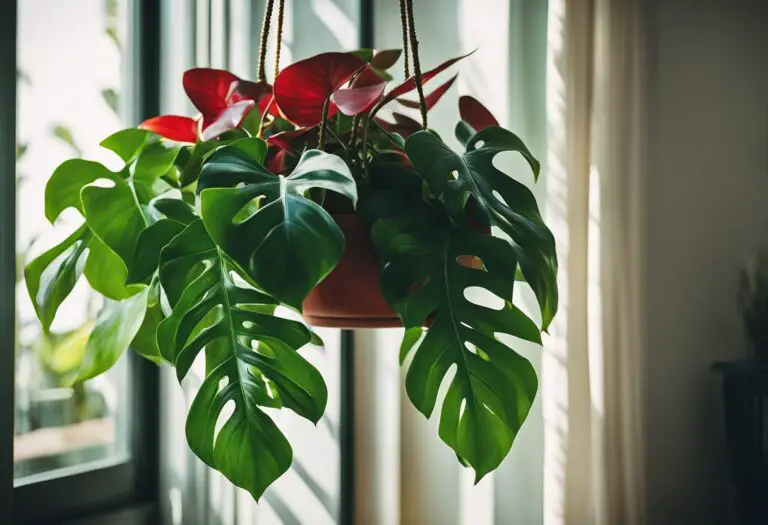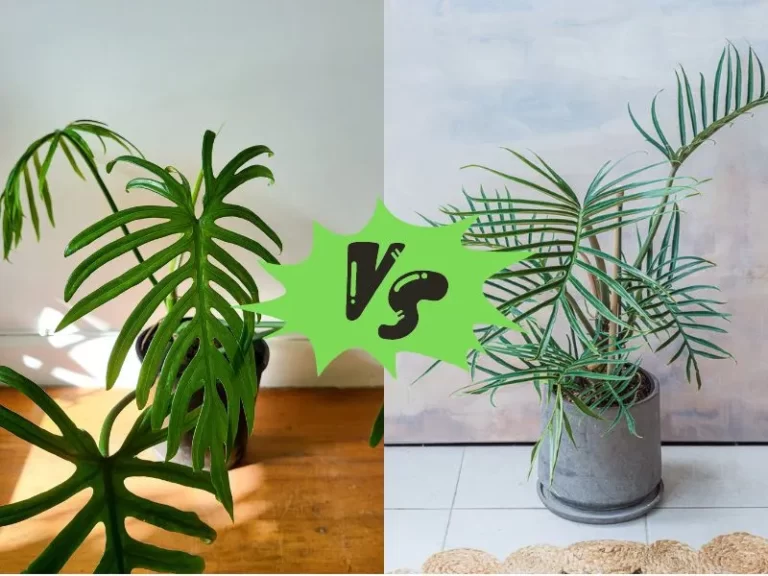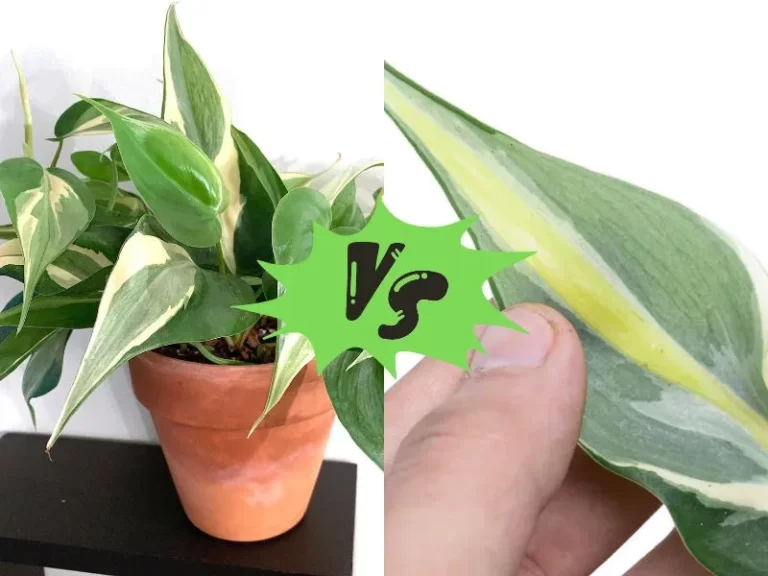Philodendron Verrucosum Panther: A Guide to Care and Maintenance
From Louise: I’m a gardening enthusiast, specializing in plant care and flower knowledge. I’m here to share my expertise and help with your gardening questions. Feel free to ask about Philodendron Plant care – I’ll respond within 24 hours!
If you’re looking for a unique and easy-to-care-for houseplant, the Philodendron Verrucosum Panther might be just what you need. This striking plant is native to the tropical rainforests of Central America and boasts large, dark green leaves with a waxy texture that make it stand out from other houseplants.

As an understory plant, the Philodendron Verrucosum Panther prefers bright, indirect light and can thrive in low-light conditions. With regular watering and some care, this low-maintenance plant can flourish in your home and add a touch of the jungle to your décor.
Key Takeaways
- The Philodendron Verrucosum Panther is a unique and easy-to-care-for houseplant native to Central American rainforests.
- This low-maintenance plant prefers bright, indirect light and can thrive in low-light conditions.
- Regular watering and some care can help your Philodendron Verrucosum Panther flourish in your home.
Philodendron Verrucosum Panther
Origins
The Philodendron Verrucosum Panther is a type of philodendron that originates from the tropical rainforests of Central and South America, particularly in countries like Ecuador, Colombia, and Peru. It is a climbing vine that can reach up to 3 feet in height and 3 feet in length.
Characteristics
As a hemiepiphyte, the Philodendron Verrucosum Panther grows attached to other trees during at least part of its life cycle.
It is distinguished by its heart-shaped, dark green leaves with golden ribbing, with leaves growing up to 12 inches long and 6 inches wide. The plant’s stem is often hairy, which gives rise to its name “verrucosum,” meaning warty.
Here are some more characteristics of the Philodendron Verrucosum Panther:
- It thrives in bright, indirect light and can tolerate lower light conditions.
- It prefers to be kept moist but not waterlogged, so regular watering is essential while avoiding overwatering.
- Propagation can be achieved through stem cuttings or air layering.
- It can be cultivated in various containers, including pots, hanging baskets, and trellises.
- This plant is slow-growing, so patience is required as it develops.
Related Posts:
- Philodendron Verrucosum Cobra: A Guide to Growing and Caring for this Rare Houseplant
- Philodendron Verrucosum vs El Choco Red: A Comparison of Two Popular Houseplants
- Philodendron Verrucosum El Choco Red: A Stunning Addition to Your Indoor Plant Collection
Care Guide

Light
Philodendron Verrucosum Panther prefers bright, indirect light, but can tolerate low light conditions. Direct sunlight can scorch the leaves, so it’s best to avoid it.
Water
Keep the soil moist but not waterlogged. Water your plant when the top inch of soil feels dry to the touch. Overwatering can cause root rot, so be careful not to water too often.
Humidity
Philodendron Verrucosum Panther thrives in high humidity environments. Mist the leaves regularly or use a humidifier to keep the air moist. This will help prevent the leaves from turning brown and crispy.
Temperature
Philodendron Verrucosum Panther prefers temperatures between 65-80°F (18-27°C). Avoid placing the plant in drafty areas or near heating or cooling vents. This will help prevent temperature fluctuations that can stress the plant.
Soil
Plant your Philodendron Verrucosum Panther in well-draining soil that is rich in organic matter.
A mixture of peat moss, perlite, and vermiculite works well. This will help prevent water from pooling around the roots and causing root rot.
Fertilizer
Fertilize your plant once a month during the growing season with a balanced fertilizer. Avoid fertilizing during the winter months, as the plant is dormant and doesn’t need as much nutrients.
Propagation
Philodendron Verrucosum Panther can be propagated through stem cuttings. Take a cutting with at least two leaves and place it in water or moist soil until roots develop. Once the roots have developed, you can transplant the cutting into a pot with well-draining soil.
Common Problems
Here are some common problems you may encounter with your Philodendron Verrucosum Panther and how to address them:
- Yellowing leaves: This can be a sign of overwatering or underwatering. Adjust your watering schedule accordingly.
- Brown, crispy leaves: This can be a sign of low humidity or too much direct sunlight. Increase humidity or move the plant to a shadier spot.
- Pests: Philodendron Verrucosum Panther can be susceptible to spider mites and mealybugs. Treat with insecticidal soap or neem oil.
By following these care tips, you can help your Philodendron Verrucosum Panther thrive and add beauty to your home.
How to Propagate Philodendron Verrucosum Panther

Propagation by Stem Cuttings
Propagating Philodendron Verrucosum Panther by stem cuttings is a quick and easy way to increase your plant collection. To propagate your plant using stem cuttings, follow these simple steps:
- Choose a healthy stem with at least 2-3 leaves on it.
- Using a sharp, sterile knife or scissors, cut the stem just below a node (the point where a leaf meets the stem).
- Remove the lower leaves from the stem, leaving only 1-2 leaves at the top.
- Dip the cut end of the stem in rooting hormone powder to encourage root growth.
- Plant the stem in a well-draining potting mix and water thoroughly.
- Cover the pot with a plastic bag or dome to create a humid environment.
- Place the pot in a bright, indirect light location and wait for new growth to appear.
Propagation by Division
Propagating Philodendron Verrucosum Panther by division is another option if your plant has outgrown its current pot. Here’s how to do it:
- Fill a planting pot with a well-draining potting mix.
- Carefully remove the plant from its current pot.
- Gently loosen the roots with your fingers.
- Cut the root ball in half with a sharp knife.
- Plant each half in its own pot.
- Water thoroughly and place in a bright, indirect light location.
Remember that Philodendron Verrucosum Panther is a slow grower, so be patient and give your new plant time to establish itself.
Keep the soil moist but not waterlogged and fertilize monthly during the growing season. With proper care, your propagated plant will thrive and become a beautiful addition to your indoor jungle. Happy propagating!
Common Issues and Solutions

Leaf Scorch
If the leaves of your Philodendron Verrucosum Panther start to turn brown and dry around the edges, it may be a sign of leaf scorch. This is usually caused by too much direct sunlight or not enough humidity.
To remedy this issue, move your plant to a spot with bright, indirect sunlight and increase the humidity around the plant. You can do this by placing a humidifier nearby, misting the leaves with water, or placing a tray of water near the plant.
Drooping Leaves
Drooping leaves on your Philodendron Verrucosum Panther may be a sign of overwatering or underwatering. Ensure that you water the plant deeply and thoroughly when the soil is 90% dry.
It is also essential to use a well-draining potting mix with plenty of chunky amendments like bark, perlite, and charcoal. If the plant is still drooping after adjusting watering habits, it may be a sign of root rot.
Check the roots for any signs of rot and remove any affected areas before repotting in fresh soil.
Yellow Leaves
Yellow leaves on a Philodendron Verrucosum Panther can be a sign of overwatering, underwatering, or nutrient deficiencies.
To prevent this issue, ensure that you follow proper watering habits and fertilize the plant every 2-3 months with a balanced fertilizer. If the yellowing persists, it may be a sign of a pest infestation.
Check the plant for any signs of pests like spider mites or mealybugs and treat accordingly.
By following these solutions, you can keep your Philodendron Verrucosum Panther happy and healthy. Remember to always monitor your plant and adjust care accordingly.
Frequently Asked Questions
How rare is the Philodendron verrucosum panther?
The Philodendron verrucosum panther is a rare and highly sought-after plant. It can be difficult to find and is often quite expensive when available. However, with some patience and persistence, you may be able to locate one for your collection.
What are some tips for growing Philodendron verrucosum panther?
To grow a healthy Philodendron verrucosum panther, it is important to provide it with the right growing conditions. This plant prefers bright, indirect light and well-draining soil.
It also needs to be kept consistently moist, but not waterlogged. Fertilize the plant regularly during the growing season, but be careful not to over-fertilize, as this can lead to burning of the leaves.
What are the ideal growing conditions for Philodendron verrucosum panther?
Philodendron verrucosum panther thrives in a warm and humid environment. It prefers temperatures between 60-80°F (15-26°C) and humidity levels of 60-70%. It also needs bright, indirect light to grow properly.
Is Philodendron verrucosum panther a slow-growing plant?
Yes, Philodendron verrucosum panther is a slow-growing plant. It can take several years for it to reach its full size, but the wait is worth it for its beautiful foliage.
What is the difference between Philodendron verrucosum panther and Philodendron verrucosum mini?
Philodendron verrucosum panther is a larger and more rare variety of Philodendron verrucosum.
It has larger leaves with a distinctive dark green color and silver markings. Philodendron verrucosum mini, on the other hand, is a smaller and more common variety with smaller leaves and a lighter green color.
Are there any pests or diseases that commonly affect Philodendron verrucosum panther?
Like most plants, Philodendron verrucosum panther can be susceptible to pests and diseases. Common pests include spider mites, mealybugs, and scale insects.
Diseases such as root rot and leaf spot can also occur if the plant is overwatered or exposed to too much moisture. Regularly inspect your plant for signs of pests or diseases and take action immediately if you notice any issues.






